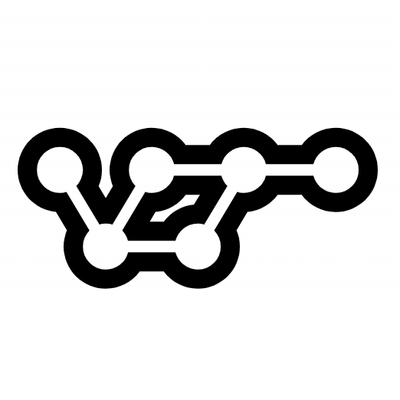
Security News
vlt Launches "reproduce": A New Tool Challenging the Limits of Package Provenance
vlt's new "reproduce" tool verifies npm packages against their source code, outperforming traditional provenance adoption in the JavaScript ecosystem.
nft-art-maker
Advanced tools
NFT Art Maker - generates images and metadata files and packs them into IPFS CAR files, all from provided PNG layers.
The primary task of this tool is to generate a randomized set of images from provided PNG layers and pack them into .car files. Then you can upload them to IPFS using nft.storage or other tools.
Please test it before using it for the real stuff. It can always be buggy.
The random assets generation is a customized and simplified version of the HashLips art engine logic. If you need more options and functionality, please use HashLips.
The tool offers two different outputs:
nft-art-maker pack and base CID for metadata files will be added to the summary metadata json file.nft-art-maker tool doesn't assume any way of uploading to ipfs, but I would recommend nft.storage where you can upload whole .car file. They offer free pinning service and Filecoin storage. So even if you delete it there or nft.storage stops working for some reason, the data will persist. Of course, learn about it first. They have a friendly UI, but you can also use the CLI tool for that.
mkdir my-nft-collection ; cd my-nft-collectionlayers directory with all of your layers split into proper directories. Read more about it below..nftartmakerrc (other file names also allowed, check out cosmiconfig for more info). This file should be a JSON formatted config file. You'll find all configuration options below.npx nft-art-maker generate or if installed globally nft-art-maker generate - it will generate all files or encoded SVG with metadata json file for each, plus it will generate one big metadata file with all editions and provenance hash. Additionally, there is also an option to pack all images and metadata files into an ipfs car files. Then every CIDs will be also actual in metadata files.You can always install it globally by npm install nft-art-maker -g and then use it like nft-art-maker generate.
Updating: when using npx, make sure that it takes the new version. You can always install it globally using npm install nft-art-maker@latest -g.
npx nft-art-maker previewnpx nft-art-maker pack (always recommended!) - this will pack all files using ipfs-car into one images.car and metadata.car files, which you can upload using services like nft.storagenpx nft-art-maker check Sometimes the names of files can be misleading when there are not enough layers to achieve the required amount of assets. This probably needs some rewrites in the future.npx nft-art-maker upload - this will upload all packed ipfs-car files to nft.storage. Set "nftStorageApiToken" config option to your API tokennpx nft-art-maker updateImageCID - this will update all metadata files based on the config option overwriteImageCIDYou should use the config file at least for layers configuration. But there are also other configuration options. Whole config example:
{
"description": "Your collection name",
"svgBase64DataOnly": true,
"layerConfigurations": [
{
"growEditionSizeTo": 100,
"layersOrder": [
{
"name": "face"
},
{
"name": "head"
},
{
"name": "eyes"
}
]
},
{
"growEditionSizeTo": 110,
"layersOrder": [
{
"name": "pinkyFace"
},
{
"name": "head"
},
{
"name": "eyes"
}
]
}
],
"shuffleLayerConfigurations": false,
"format": {
"width": 20,
"height": 20
},
"metadataSchemaMapper": {
"name": "name",
"description": "description",
"edition": "edition",
"attributes": "attributes",
"base64SvgDataUri": "base64SvgDataUri",
"image.href": "image.href",
"image.hash": "image.hash",
"image.ipfsUri": "image.ipfsUri",
"image.ipfsCid": "image.ipfsCid",
"image.fileName": "image.fileName"
},
"rarityDelimiter": "#",
"uniqueDnaTorrance": 10000,
"layersDirName": "layers",
"outputDirName": "output",
"outputJsonDirName": "json",
"outputImagesDirName": "images",
"outputJsonFileName": "metadata.json",
"outputImagesCarFileName": "images.car",
"outputMetadataCarFileName": "metadata.car",
"outputMetadataFileExtension": ".json",
"editionNameFormat": "#",
"tags": "tag1,tag2,tag3",
"preview": {
"thumbPerRow": 20,
"thumbWidth": 60,
"imageRatio": 1,
"imageName": "preview.png"
},
"nftStorageApiToken": "Your nft.storage API token",
"overwriteImageCID": "Your image CID after upload to your IPFS storage."
}
Every subdirectory in your layers directory should be named after the type of the layer, and inside, you should put your png files. The name structure should be as follows: filename1#100.png, where the #100 is a rarity weight. Good explainer in Hashlips repo: here.
Enabled by default, but you can always enable it to shuffle items from different layerConfigurations.
You can decide if you want to have encoded SVGs or standard PNGs files. Use svgBase64DataOnly setting. Be aware that these are totally separate use cases, not the option to choose the file format.
The example of output metadata.json file structure with empty values (this is one big file with all editions):
{
"editions": [
{
"name": "",
"description": "",
"edition": 0,
"attributes": [
{
"trait_type": "",
"value": ""
}
],
"base64SvgDataUri": "",
"image": {
"href": "",
"hash": "",
"ipfsUri": "",
"ipfsCid": "",
"fileName": ""
}
}
],
"provenanceHash": "",
"metadataFilesIpfsBaseCid": ""
}
The example of a single output metadata file (for example 1.json):
{
"name": "",
"description": "",
"edition": 0,
"attributes": [
{
"trait_type": "",
"value": ""
}
],
"base64SvgDataUri": "",
"image": {
"href": "",
"hash": "",
"ipfsUri": "",
"ipfsCid": "",
"fileName": ""
}
}
From v5.2.0, you can modify the structure of the final metadata files. For now, if you would like to do that, you should configure all fields. Here is the default configuration (check how to use it in the .nftartmakerrc config file above):
{
"metadataSchemaMapper": {
"name": "name",
"description": "description",
"edition": "edition",
"attributes": "attributes",
"base64SvgDataUri": "base64SvgDataUri",
"image.href": "image.href",
"image.hash": "image.hash",
"image.ipfsUri": "image.ipfsUri",
"image.ipfsCid": "image.ipfsCid",
"image.fileName": "image.fileName"
}
}
As you can see here, we have a key:value object. All keys are currently required variables, which should all be in the configuration if you decide to use the metadataSchemaMapper.
So, for example, let's change the structure to match the OpenSea requirements. Because not all fields are required by OpenSea, we will put them in a separate key.
OpenSea metadata mapper proposition example:
{
"metadataSchemaMapper": {
"name": "name",
"description": "description",
"edition": "edition",
"attributes": "attributes",
"base64SvgDataUri": "base64SvgDataUri",
"image.href": "external_url",
"image.hash": "image_additional_info.hash",
"image.ipfsUri": "image",
"image.ipfsCid": "image_additional_info.ipfsCid",
"image.fileName": "image_additional_info.fileName"
}
}
We changed the image.href to be external_url in our metadata files and image.ipfsUri to image in our metadata files. We also moved all other data from the default image key to the separate image_additional_info key. So now our final structure looks like this:
OpenSea final metadata form example:
{
"name": "",
"description": "",
"edition": 1,
"attributes": [
{
"trait_type": "",
"value": ""
}
],
"external_url": "",
"image_additional_info": {
"hash": "",
"ipfsCid": "",
"fileName": ""
},
"image": ""
}
Deployed example: https://bafybeih6ii5v2hmeqsiwzkvqqw7oearegyysr6ibgpzfgmlf3ancjtghku.ipfs.nftstorage.link/111.json
Important!
Some of the image fields will be populated appropriately after running the pack command. All JSON files will get an update. They will be also updated in the final metadata.car file. This is why it is always recommended to use the pack command. But you can also update all paths with your own scripts.
The example of an actual single metadata file: https://ipfs.io/ipfs/bafybeied5z3gndksdmbeaqxgbxryax6xp27nqfj3wy7c5x3usrol4sngam/149.json (the image is just for tests, poor quality, but also generated using the tool, there is a whole collection of 200 pieces so that you can change numbers to preview them).
Here is an example of the layers directory structure with the configuration from the example above.
layers/
├── eyes
│ ├── eyes1#100.png
│ ├── eyes2#100.png
│ ├── eyes3#100.png
│ ├── eyes4#100.png
│ ├── eyes5#100.png
│ └── eyes6#100.png
├── face
│ ├── face1#100.png
│ ├── face2#100.png
│ ├── face3#100.png
│ ├── face4#100.png
│ └── face5#100.png
└── head
├── head1#100.png
├── head2#100.png
├── head3#100.png
├── head4#100.png
├── head5#100.png
├── head6#100.png
├── head7#100.png
└── head8#100.png
This package has a small helper to upload the packed car files to nft.storage. To archive the only requirement is addition in the .nftartmakerrc config file: "nftStorageApiToken": "Your nft.storage API token". See the example above.
Important! It is not a part of the standard flow! pack command will do this for you too.
This is useful when you want to upload image folder with NFT UP or Pinata (or any other 3rd party IPFS storage provider.)
In case you are dealing with a very large collection and the ipfs upload failed for some reasons you can first upload the images to an IPFS provider.
After you received the CID of the image location following steps are required:
overwriteImageCID option with your CID.nft-art-maker updateImageCID which will re-generate your metadata files with the image CID.nft-art-maker globally: npm install -g nft-art-makerexample directory and run nft-art-maker generatenpm installnpm linknpm run buildnpm run test (more integration than unit, you would need to provide the nft.storage api key in the tests/.nftartmakerrc)MIT
FAQs
NFT Art Maker - generates images and metadata files and packs them into IPFS CAR files, all from provided PNG layers.
The npm package nft-art-maker receives a total of 3 weekly downloads. As such, nft-art-maker popularity was classified as not popular.
We found that nft-art-maker demonstrated a not healthy version release cadence and project activity because the last version was released a year ago. It has 1 open source maintainer collaborating on the project.
Did you know?

Socket for GitHub automatically highlights issues in each pull request and monitors the health of all your open source dependencies. Discover the contents of your packages and block harmful activity before you install or update your dependencies.

Security News
vlt's new "reproduce" tool verifies npm packages against their source code, outperforming traditional provenance adoption in the JavaScript ecosystem.

Research
Security News
Socket researchers uncovered a malicious PyPI package exploiting Deezer’s API to enable coordinated music piracy through API abuse and C2 server control.

Research
The Socket Research Team discovered a malicious npm package, '@ton-wallet/create', stealing cryptocurrency wallet keys from developers and users in the TON ecosystem.